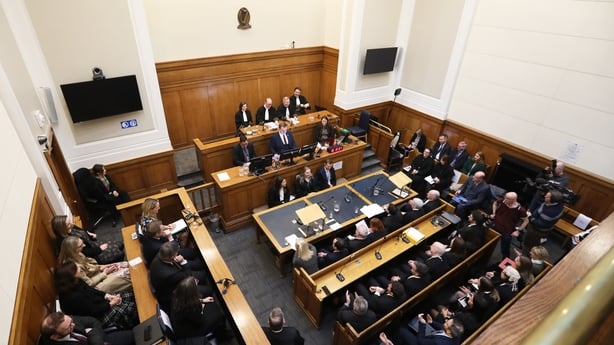A new court dealing solely with planning and environmental matters, which sat for the first time this morning, will radically transform the way such issues are dealt with by the legal system, President of the High Court, Mr Justice David Barniville has said.
The ceremonial first sitting of the High Court's Planning and Environment Division was attended by Minister for Justice Helen McEntee and Attorney General Rossa Fanning, as well as barristers and solicitors specialising in the area.
The minister said the court would allow planning, development and environmental issues to be dealt with more efficiently and effectively.
She said this was key to enable the State to deliver housing and infrastructure while also protecting the environment.
The AG told the court that no one who valued the rule of law should want to see litigation weaponised as a tactic of obstruction and delay. And he said we could not live in a society where vital infrastructural developments are routinely paralysed for years by legal objections.
Mr Fanning said legal challenges to large projects must be determined promptly, irrespective of outcome and he believed the new court would perform a vital societal role in this regard.
The court has been operating on an administrative basis since April, but today marks its formal establishment.

Three judges will work on the list full time, presided over by Mr Justice Richard Humphreys.
Mr Justice Humphreys said planning and environmental cases are often "document heavy, technicality heavy and EU law heavy" and can be "time consuming and problematic" if they are the regular court lists.
He said the new specialised court would be better placed to keep track of developments in the area. He said it would also enable the development of a high level of judicial expertise in these matters.
Hearings in the court are generally paperless and confined to three days. The target is to produce judgments within two months if possible. The list has around 144 live cases at the moment.
The court is based on the model of the Commercial Court which allowed commercial cases with a value of over €1 million to be fast tracked through a specialised court.
Mr Fanning pointed out that up until 1963, there was no such thing as planning law in this jurisdiction. He referenced the "Church Street disaster" in 1913, in which seven people died after two tenement houses collapsed, saying the historical consequences of the lack of regulation were on occasion, catastrophic.
He said no area of law was more complex than the balancing of rights which had to be done in planning and environmental disputes.
He also pointed out that the interests of many people are often engaged in them - be they the economic interests of the developer or the interests of the community in which a development is proposed.
Cliona Kimber SC, chair of the Climate Bar Association said the new court was a good start.
But she urged the Minister for Justice to implement recommendations of the Citizens Assembly on Biodiversity and establish an environmental court at circuit and district court levels as well.
Ms Kimber said climate change, pollution and loss of biodiversity would cause conflict which would need to be resolved in the courts and she said she hoped the new court would be the start of a new approach by the state to the enforcement of existing legislation in order to meet "the defining challenge of our age".






